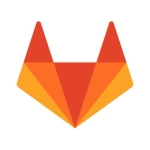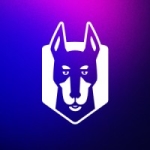What is our primary use case?
There are three areas where we started using Veracode immediately. One is static component analysis. The second is their static application security test, where they take a static version of your code and scan through it, looking for security vulnerabilities. The third piece is the DAST product or dynamic application security test.
We also use their manual pen-testing professional services solution in which they manually hit a live version of your product and try to break it or to break through passwords or try to get to your database layer—all that stuff that hackers typically do.
How has it helped my organization?
One of the big things for us, and something that I realized because of my experience with engineering teams for more than 20 years, is that when it comes to security, changes are happening so fast. The vulnerabilities are being uncovered so quickly that we cannot go at this alone. No matter how big an army of engineers you have internally, who scan systems, study security engineering best practices, and do a lot of research, there is no way for an individual organization to keep up with everything that's going on out there. Leaning on an expert like Veracode, a company where this is their only job, is absolutely critical for us and game-changing. It really took it up a notch for us in terms of identifying challenges before they occur.
We were using best-coding practices already, but the question was, is that good enough? The first thing we got out of Veracode was a quick validation of our processes. They said, "Oh this is great. What you've been doing is extremely good. Now keep doing what you're doing from a design and development perspective." But, yes, the world is changing so fast that we also want to make sure that we stay ahead of best practices.
When OWASP, which is the main group that puts out lists of the top ten security issues, updated their list recently, Veracode provided it to us, even though it was something that was right off the OWASP website. When you're with Veracode and you're talking about it, your engineers pay extra attention to it. They look through it and they think about what they can do better when they code. We felt we couldn't go at it alone. We needed a partner. Veracode has been a great partner so far for us.
The four products we have from Veracode give us visibility into application status and help to reduce risk exposure for our software. That is one of the things we like about Veracode a lot. There is a single area on the dashboard where you can get a full view of all of the tests and the results from everything. There is a nice, very simple graphic that shows you the types of vulnerabilities that were found, their severity, the scoring, and in what part of the code they were found. All the details are together in one place. Having one area where we get all these results, rather than having to run around and pull reports together from four or five different places, is very helpful to us.
The solution has also definitely reduced the cost of application security for our organization. But the point is almost moot. Thinking about security engineering costs in a silo doesn't make sense anymore. You need security to be integrated completely into your product. Ten years ago, or even five years ago, we would have hired a couple of security engineers who would have been solely and entirely responsible for software security. They would have done their best using some integrated tools and some manual tools. But in no way would they be close to being as efficient and capable as Veracode's tools.
Hiring engineers would be a bad idea because, aside from their being more expensive than Veracode's tools, guaranteed, two security engineers are not going to come close to identifying all of the issues and challenges that Veracode is uncovering for us. Veracode has a large team that is constantly learning, growing, and engaging the industry as a whole, to understand the latest and greatest for security best practices and security vulnerabilities. Two engineers don't have the time to do that much work. To me, it's not even a question of budget. It's more a question of leveraging an industry leader that has core competency in this area. We need a partner like that to work with us.
What is most valuable?
With the static component analysis, they scan your code statically and they look specifically at third-party libraries and at any third-party code that you have in your product for vulnerabilities, updates, and changes in licensing. For example, if one of them changed from a license that allowed for more changes on your side to something that is more restrictive, they would flag that for you so that you can evaluate it and know immediately that you need to take some action. They keep abreast of the latest and greatest regarding third-party components. That has been good and very helpful for us to know how secure our product is as a result of using third-party libraries, as we didn't write that code.
The SAST component looks directly at our own code and any best practices we haven't followed and whether there is a security challenge or loophole. We get immense value from that as well. They've been able to flag items and say, "While this is a low-risk item, we would suggest you refactor it or add it to your roadmap to close that loophole, just in case a very clever hacker tries to get around your system. That has been very helpful to us too.
And the SAST is very quick. It sniffs through the product very quickly and almost immediately gives us the results we need. Static analysis is something you do every once in a while, in a very regimented and rigorous way, so you don't need it to be super-duper fast, but you need it to be efficient. You don't want to wait days for them to give you an analysis. And Veracode's static analysis comes back in a very short period of time.
With the DAST, you provide their product with a dynamic instance of your operational product, by pointing the dynamic testing tool at your product. It beats it up, pokes around, and tries to find ways to penetrate its defenses and find security issues and challenges within your product.
Veracode also has a very good report that gives us best practices regarding ensuring compliance, and we can go back to them for additional consulting. We've not had to do that. We typically scan through it and say, "Okay, it's good that it meets those best practices." We rely on them to make sure that their products are kept updated, so that we don't have to review a lot of these standards issues.
Also, as we did our analysis of Veracode, we loved the fact that they are completely integrated into GitHub. You can trigger everything using GitHub Actions. You don't want to go too far out of the application, move something into another repo, and have to write or copy and paste it over. Veracode easily integrated into our GitHub repos.
What needs improvement?
One thing I would strongly encourage Veracode to do, early on in the process—in the first 30 days—is to provide a strong professional services-type of engagement where they come to the table with the front solution engineers, and work with their customer's team and their codebase to show how the product can be integrated into GitHub or their own repository. They should guide them on best practices for getting the most out of Veracode, and demonstrate it with live scanning on the customer's code. It should be done in a regimented way with, say, a 30-minute call on a Tuesday, and a 30-minute call on a Friday.
I would ask Veracode to be a lot more engaged with the customer and set up live sessions where they force the customer to engage with Veracode's technical team. Veracode could show them a repo, how they should do things, this is what these results mean, here is a dashboard, here's the interpretation, here's where you find the results. And they should say, "If you don't understand something, here's how you contact customer support." A little bit more hand-holding would go a long way toward the adoption of Veracode's technology.
Buyer's Guide
Veracode
September 2025
Learn what your peers think about Veracode. Get advice and tips from experienced pros sharing their opinions. Updated: September 2025.
868,787 professionals have used our research since 2012.
For how long have I used the solution?
I'm familiar with Veracode from a couple of companies. One is my previous company. We had examined the platform and trialed it for use. When I joined my current company, about six months back, I looked at various platforms that we could use for both static and dynamic testing of our code and I naturally picked Veracode. I had familiarity with them and experience with them. We did some research on them and we did a couple of reviews with my engineers, and then I decided to sign up with Veracode.
What do I think about the stability of the solution?
It's a very stable solution, absolutely. We've had no issues with it. We have not had to poke around and report bugs or anything of that sort.
What do I think about the scalability of the solution?
We have not had any scale limitations thus far, not even close. Maybe it's the size of our repositories and what we do, but for our needs, it has been super-scalable.
It's being used by all my teams now. I'd like it to be used even more often by building a tighter integration into our regular SDLC practices. I'm hoping that that happens over time. That is one of my focal points as I start to plan for next year.
How are customer service and support?
We bought their premier service package and that allows us to have access to their consultants, their customer support, and their customer success manager so that we get a higher level of service from them. We took the premier package from day one because we needed the consulting hours, help, and training from them.
Every month or so we have a call with their customer success group. Sometimes we come prepared and say, "Hey, we want to talk about these specific five things," and other times we just ask them to give us their latest and greatest and to update us on what has happened since the last time we spoke: What did you add to the product? What did you find? What should we be watching out for? They alert us to new vulnerabilities and things that we should be looking for.
We also do a hands-down, tactical Q and A, where we ask questions like, "Hey, we tried to do this and it failed," or about challenges we had and how they suggest we go about resolving them. I pretty much have my entire team on these calls and that helps us stay on top of things. As VP of engineering, I'm a big believer in shift-left practices. I would like to make sure that my team takes full responsibility for quality assurance and security.
Which solution did I use previously and why did I switch?
We did not have a previous solution for application security testing in this company.
How was the initial setup?
The initial setup was straightforward. That was something I really liked about it in my previous job, and it bore fruit right away in what we are doing in my current company. That's one of the reasons I chose them. It's very easy to set up. You can get going quickly and you don't have to learn a whole lot. We were able to integrate it into our system fairly quickly, and start, almost immediately, to generate the results we needed to improve our product.
They do an immediate kickoff right after you sign the contract so you can ask questions like, "How do we set this up? What do we do?" We went through that and, once they trained us on those things, we did not really have a reason to go back to customer support. The product is pretty intuitive. They sent us a couple of videos and provided some early consulting for setup. They have a good process, including a 30-day check-point. Very recently, there was one small thing we needed in terms of knowledge and education and they came back to us with a quick response.
We were ready to run tests within two weeks of setup, and we accomplished running it within a month of buying the product.
It does require much maintenance at all. I love the fact it's a SaaS product. Every time we use it, we're getting the latest version. It's updated automatically. We get decent updates about product management and the roadmap.
What about the implementation team?
In terms of implementation services, we didn't go to any third party. Veracode was pretty good. They were very responsive and answered questions. We were able to get the help we needed.
If Veracode thinks that it's best to bring in an integrator for the first 30 days, they should build that into the cost of the contract. I don't think I would have blinked if they had told me, "We suggest paying a little bit extra for the first year because we want you to purchase a professional services contract from this company. They will work with you for a month and guarantee to get you up and running with best practices within 30 days."
What's my experience with pricing, setup cost, and licensing?
I was impressed with the pricing we got from Veracode. I was able to make it work very well within our budget.
Which other solutions did I evaluate?
When I came to my current company, I looked at a few options for security testing, and then zeroed in Veracode as the best option for us and for what we needed to do. We didn't go through too many competitors. Because I had experience with it, I said we should use it. I felt that it was the right product for us.
One of the advantages of Veracode is that it is a one-stop shop for everything you need. I did not want to hunt around for five different solutions and have to put them together and have to use five different dashboards. I really wanted a single solution for all our needs, and that's what I got from Veracode: static, dynamic, and the manual pen testing.
What other advice do I have?
My advice would depend on the size of your company and whether you have dedicated security engineers. For us, given the size of our company, Veracode has been very important. We needed a turnkey solution, and one that integrated directly into our product. We wanted something immediate. We couldn't take the time to hire a bunch of security engineers and have them figure it out and then do an RFP. That was not us.
If you're in that position, where you need something that really meets all of your software security needs during the development life cycle, check out Veracode for sure. Look at a couple of their competitors. It's fine to kick the tires a bit and then what you can get from others, but I would definitely recommend that one-stop-shop type of thinking. You really want to get your solutions from one vendor, a partner that is strong in this area.
For the manual pen testing, there's a full day where they engage your product. It takes us about half a day of planning and putting it together, and then providing them with a live website. They then bring their team together and go through all the reports about what they saw and, typically, within a period of three days from the time of the manual pen test, we get results from them. Along with that, they also offer any kind of service you need to interpret or understand the results. You can also get some follow-on from them in terms of best practices and how to fix things.
In terms of false positives, I like my security scans to be a little more conservative, rather than being aggressive about eliminating things without me seeing them. I'm okay with the fact that, every once in a while, they flag something and bring it to our attention, and we see that it is really a non-issue. The reason that is my approach is that, when you do a static scan or a pure dynamic scan, these products don't completely understand your application environment. They cannot guess that this or that code is not used in this fashion. They can only flag something to bring it to your attention, and then you make the judgment call.
Veracode has flagged a few issues for us that we decided were non-issues. In their dashboard, you can actually provide a dispensation for each of those items. So we have gone in there and checked a box and put a comment saying, "Not applicable to our workflow." I was very happy that they caught those things. It gives us some confidence that they're looking deep into our product. We haven't had any major issues with false positives. What they flagged to us was reasonable, and we were able to decide that they were not really an issue for us.
Our confidence level is very high, thanks to Veracode's solution and our internal focus on shift-left methodology. I push my engineers to make security a part of the design, development, and testing processes. It can't be something that is done as an afterthought. We need shift-left thinking all the way to the left. You want to tackle an issue before it occurs.
Overall, Veracode has affected all our application security in a very strong, positive way, and I look forward to using their products and technology to continuously improve our security best practices.
I would give it a 10 out 10. It really is a strong solution for the industry. I'm looking forward to engaging Veracode in an even stronger way in 2022. I want to tightly align what we're doing, from a security best-practices perspective, even more with what they have to offer.
Disclosure: PeerSpot contacted the reviewer to collect the review and to validate authenticity. The reviewer was referred by the vendor, but the review is not subject to editing or approval by the vendor.




















